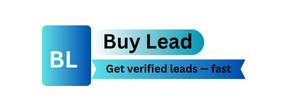Understanding Telemarketing Cost: A Strategic Overview
Telemarketing remains a vital tool for many businesses. It connects companies directly with potential customers. However, understanding telemarketing cost is crucial for success. These expenses are not always straightforward. They encompass many different elements. Strategic planning helps in managing these costs effectively. Businesses must analyze their investment deeply. This ensures every dollar spent yields value. A clear grasp of financial outlays is essential. It supports informed decision-making. Proper cost analysis drives campaign efficiency. It also enhances overall profitability. Ignoring these elements can lead to significant waste. Therefore, a proactive approach to cost management is vital for any organization. This guide explores the various dimensions of telemarketing expenditure.
Key Elements Driving Telemarketing Expenditures
Several factors contribute to the total telemarketing cost. Labor is often the most significant component. This includes agent salaries and benefits. Training new staff also adds to this sum. Operational overheads are another major part. These cover office space and utilities. Technology infrastructure is indispensable today. Phone systems, dialers, and CRM software represent substantial investments. Data acquisition forms a critical upfront expense. Businesses need accurate, targeted lists for effective outreach. For example, acquiring a British Student Phone Number List Business Package can be a specific data cost. Licensing fees for such data are important to consider. Poor quality data can inflate costs significantly. It leads to wasted calls and lower conversion rates. Evaluating each component helps to control the overall budget. Careful budgeting is always a wise first step.
Optimizing Telemarketing Cost Through Operational Efficiency
Reducing telemarketing cost requires smart operational strategies. Campaign management plays a key role here. Well-designed scripts increase call effectiveness. They guide agents to deliver consistent messages. This reduces call duration and improves outcomes. Ongoing agent training is also paramount. Skilled agents handle objections better. They close sales more frequently. This directly impacts the cost per lead. Utilizing a robust CRM system tracks interactions. It provides valuable insights into customer behavior. This allows for more personalized follow-ups. Regular performance reviews help identify areas for improvement. Adjusting strategies based on data prevents wasteful spending. Efficiency in operations translates to significant savings. It maximizes the return on your telemarketing investment. Focus on these areas for better results.
The Crucial Impact of Data Quality on Telemarketing Costs
Data quality profoundly affects telemarketing cost. High-quality data targets the right prospects. It minimizes unproductive calls. This directly reduces agent idle time. It also lowers overall operational expenses. Poor data, conversely, wastes valuable resources. Agents spend time calling disconnected numbers. They also speak with uninterested individuals. This drives up the cost per successful contact. Investing in clean, relevant data is a cost-saving measure. It ensures your team focuses on high-potential leads. Regular data cleansing processes are vital. They keep your lists current and accurate. Targeted campaigns built on good data perform better. They achieve higher conversion rates. This efficiency boosts your overall ROI. Data is the foundation of any successful campaign.
Measuring Telemarketing ROI: Connecting Spend to Success
Understanding telemarketing cost goes beyond mere expenditure. It involves evaluating the return on investment (ROI). Businesses must track key metrics diligently. These include conversion rates and cost per acquisition. Analyzing these figures reveals campaign effectiveness. It shows where your investment is truly paying off. Long-term customer value is also crucial. A successful call can lead to lasting client relationships. This generates revenue far beyond the initial sale. Continuous monitoring helps in strategy adjustment. It allows for agile responses to market changes. Strategic planning, much like Mastering Content Writing: The Strategic Power of Backlinks for SEO, involves understanding how various elements work together for overall success. Connecting your telemarketing spend to measurable outcomes is essential. This ensures financial accountability. It drives sustainable business growth. Focus on value, not just cost.
Strategic Approaches to Managing Future Telemarketing Costs
Proactive management is key to controlling future telemarketing cost. Businesses should regularly audit their expenses. This includes reviewing technology subscriptions. It also means assessing agent performance. Exploring new technologies can offer efficiencies. Cloud-based solutions might reduce infrastructure needs. Outsourcing some telemarketing functions is an option. It can provide cost advantages and scalability. However, quality control becomes vital. Maintaining a flexible strategy is important. Market conditions change, and so do costs. Adapting quickly prevents budget overruns. Investing in robust analytics tools helps predict future trends. This allows for better forecasting and budget allocation. Ultimately, a holistic view of telemarketing operations ensures optimal cost management. It helps secure long-term success. Careful planning is always beneficial.
